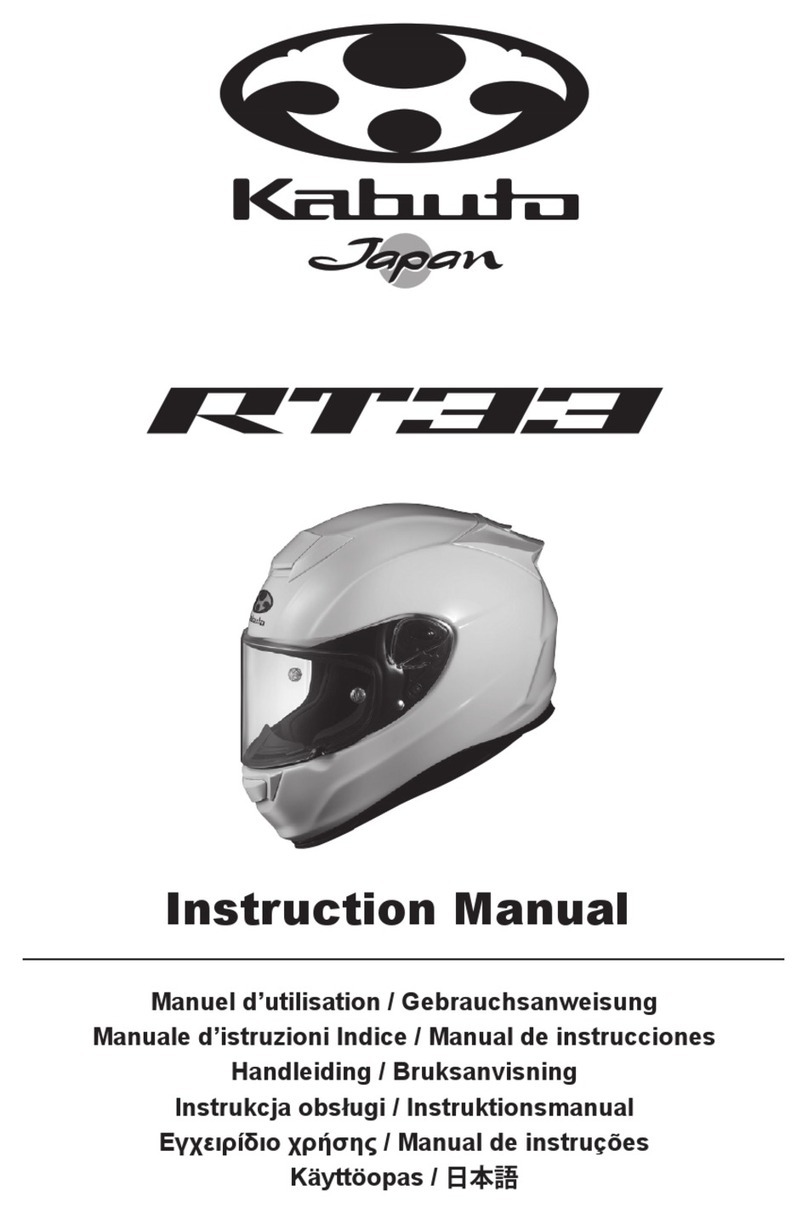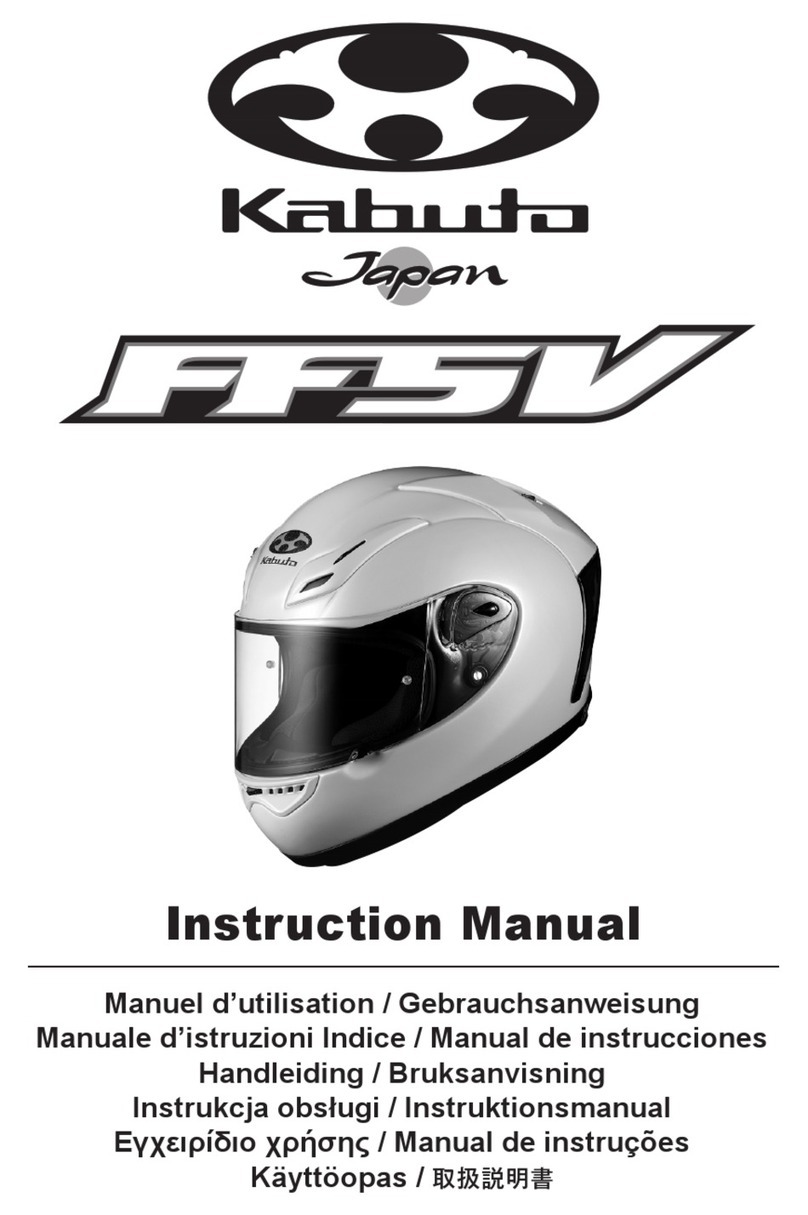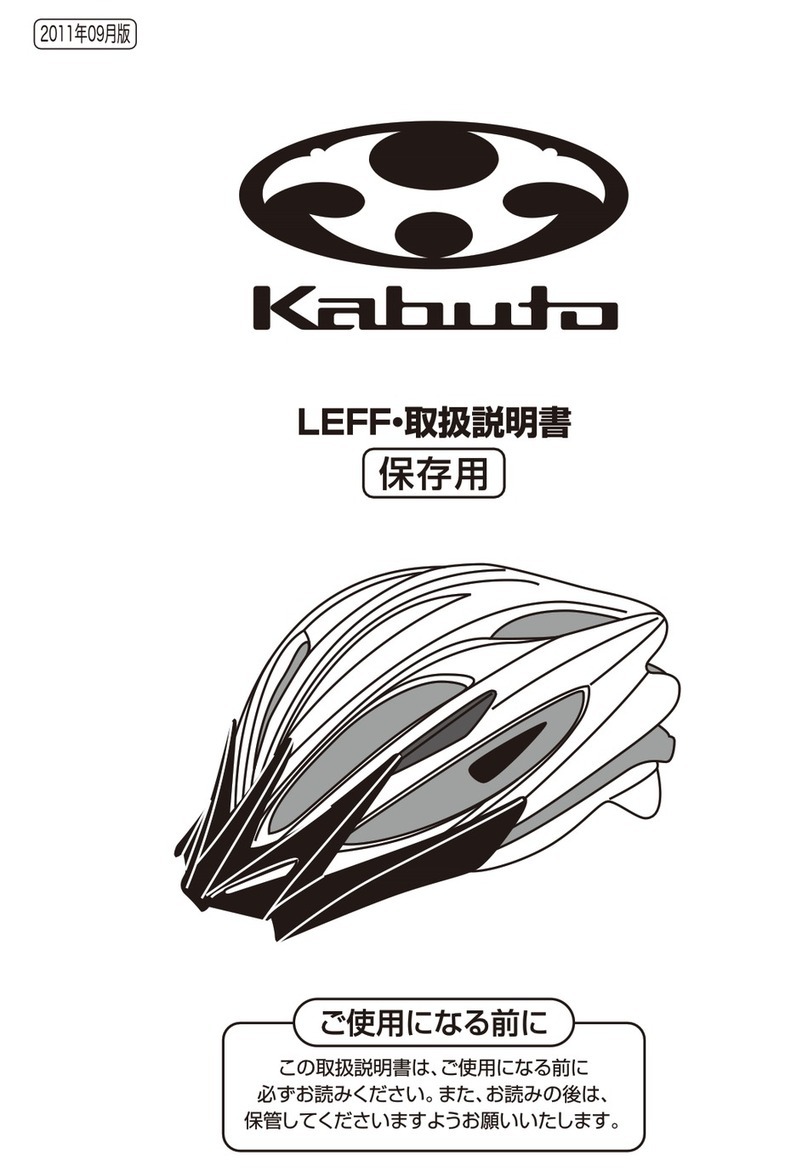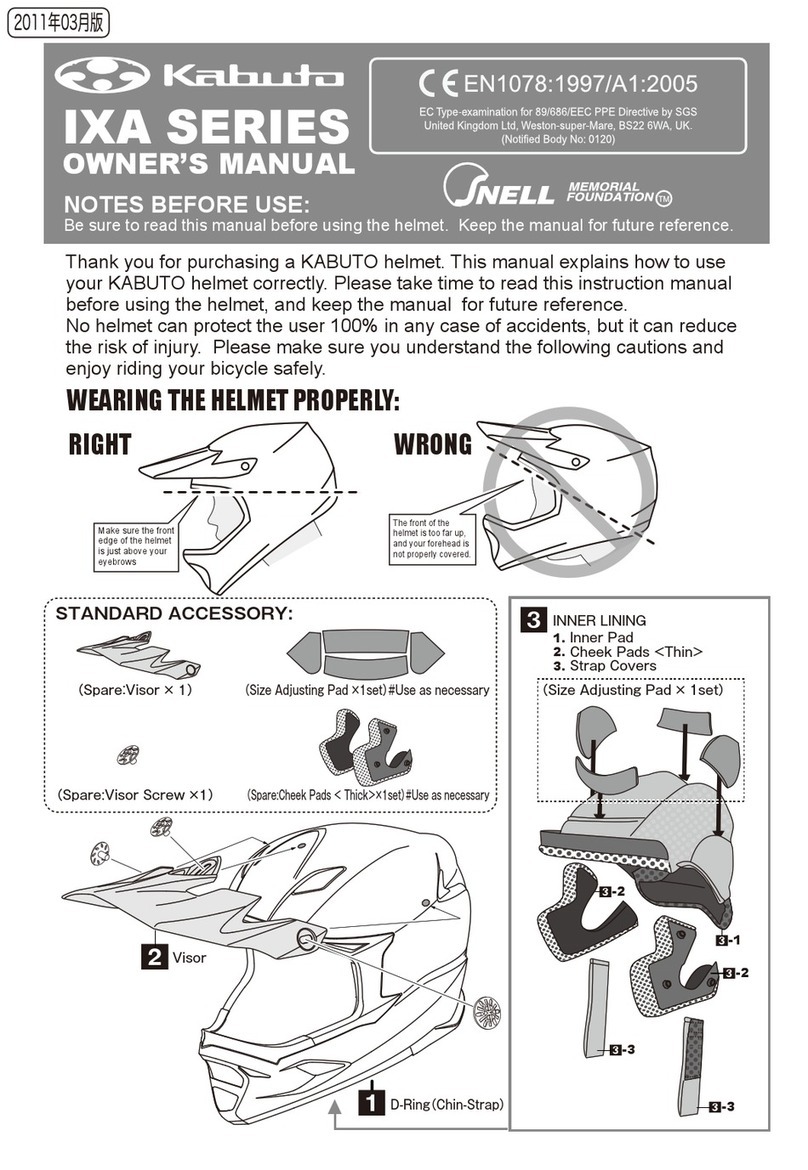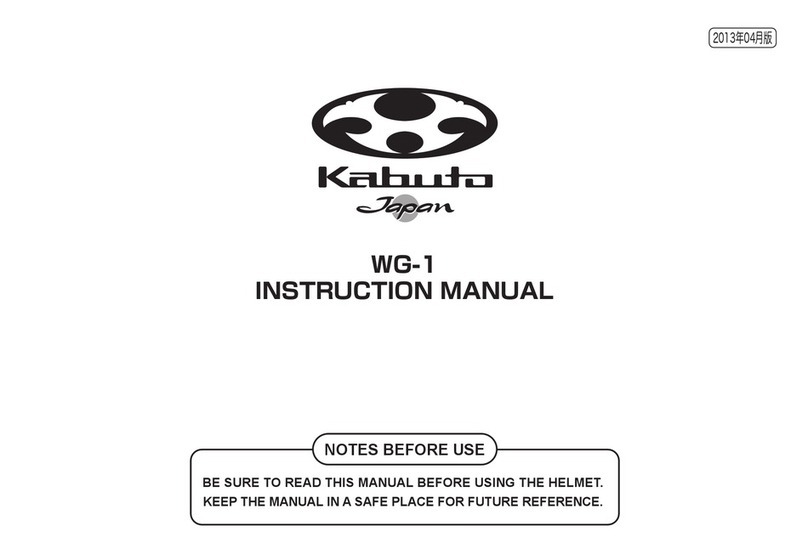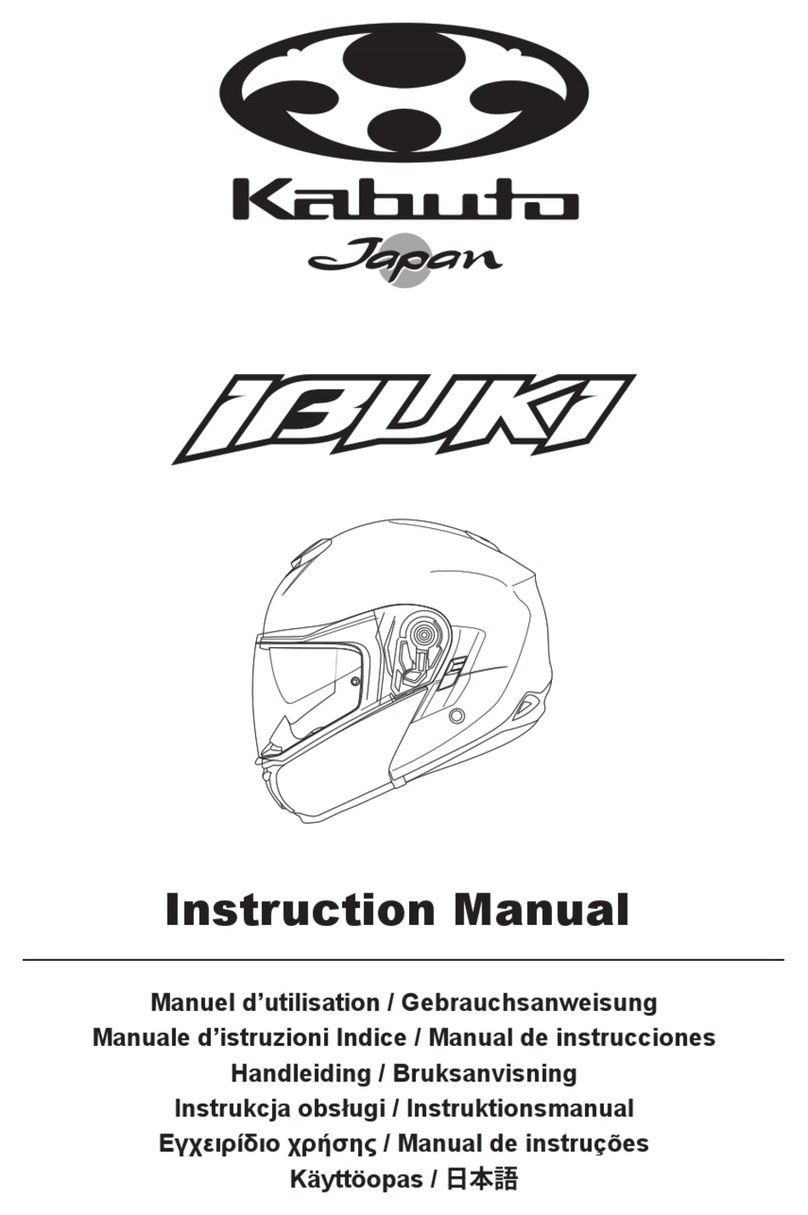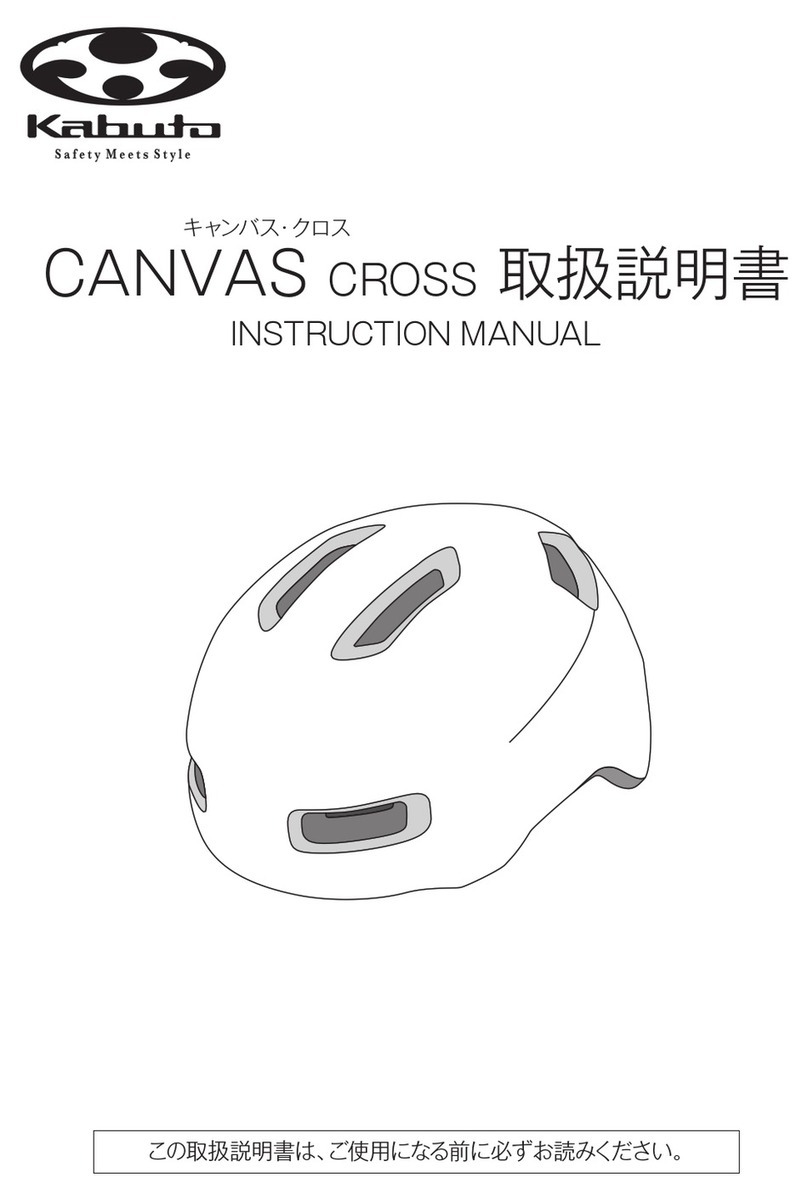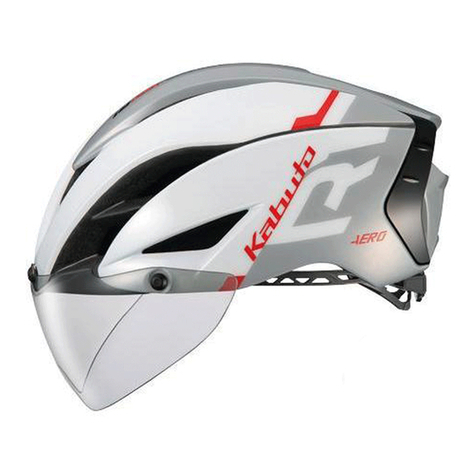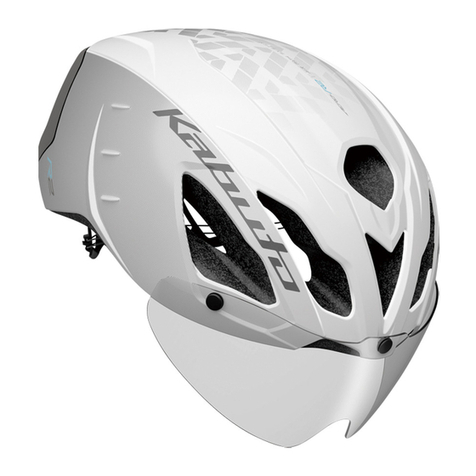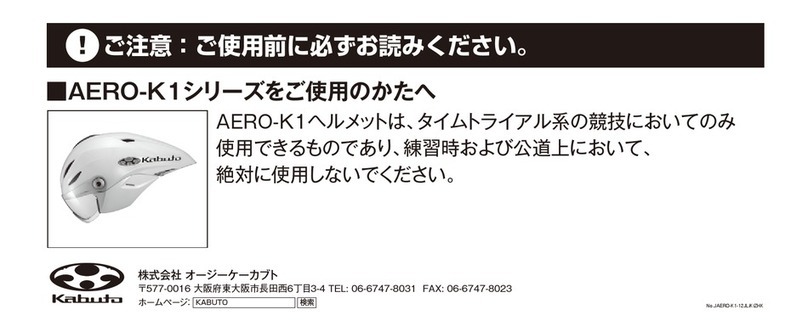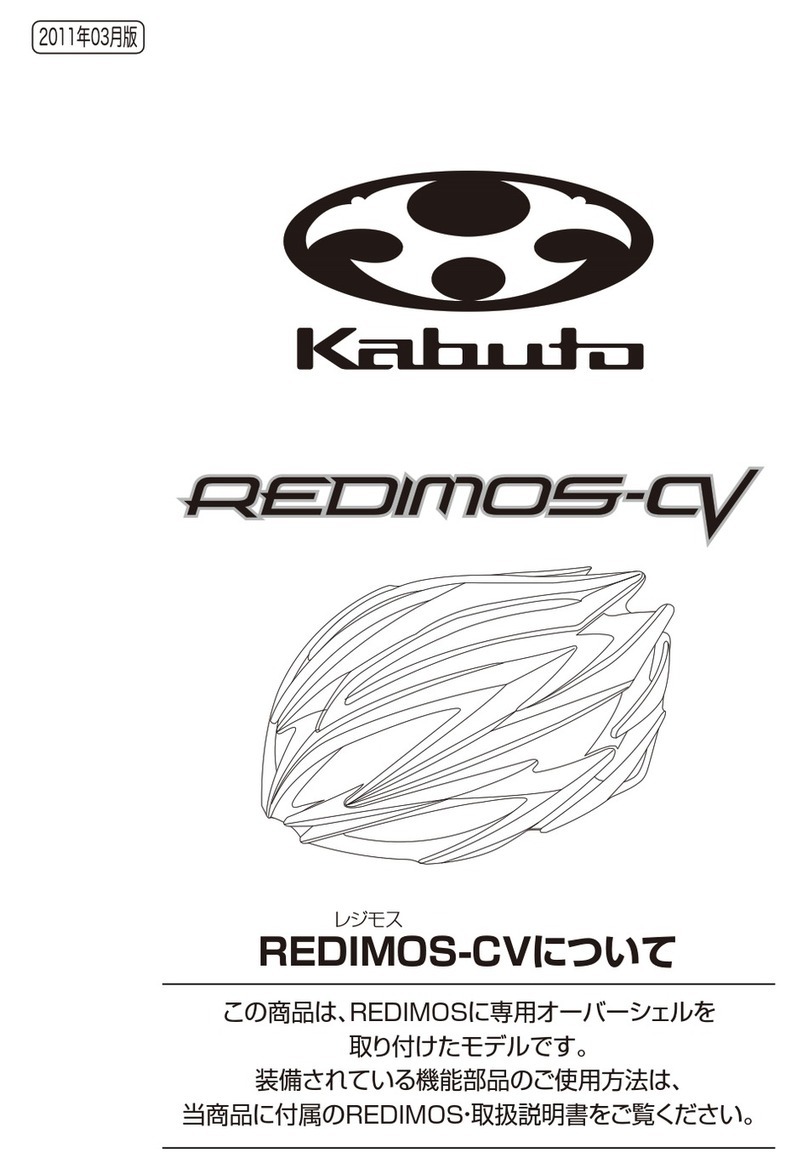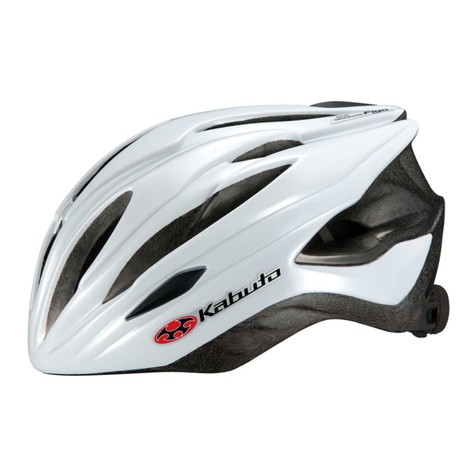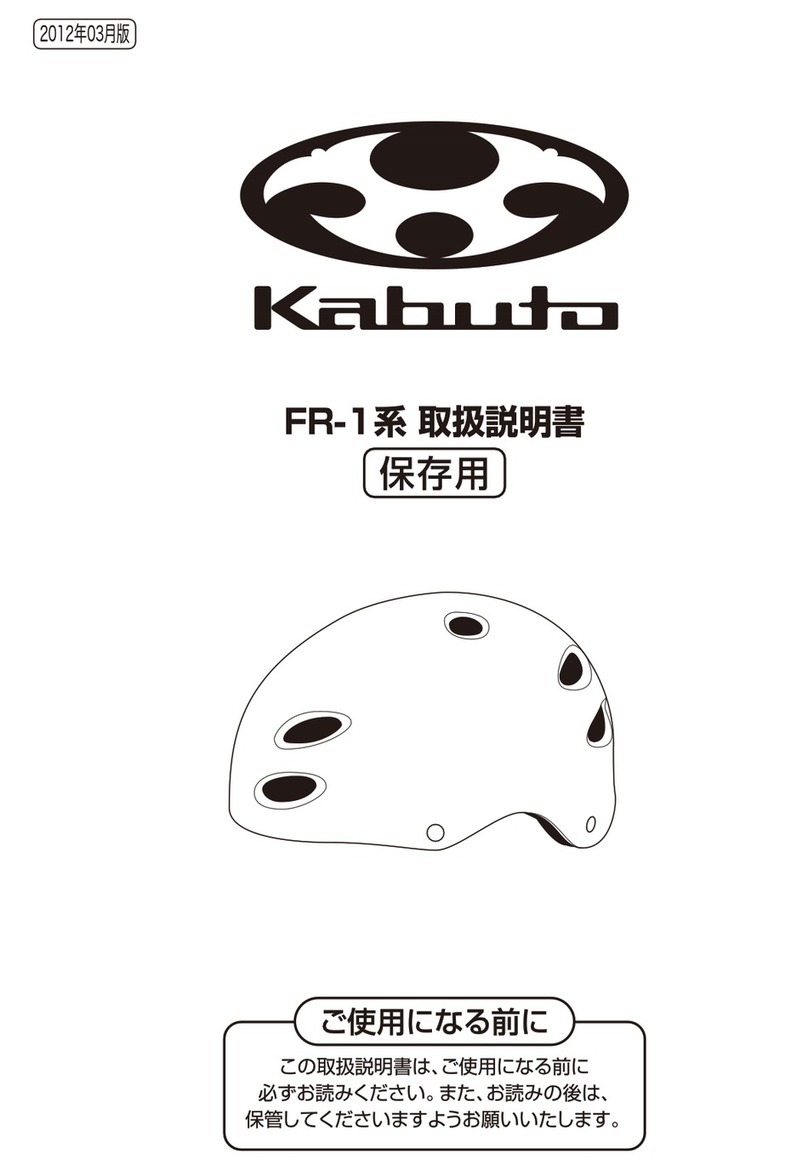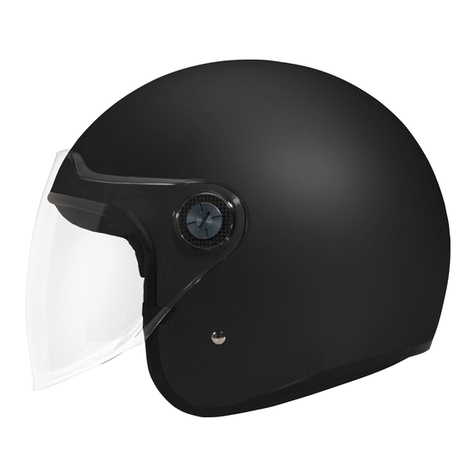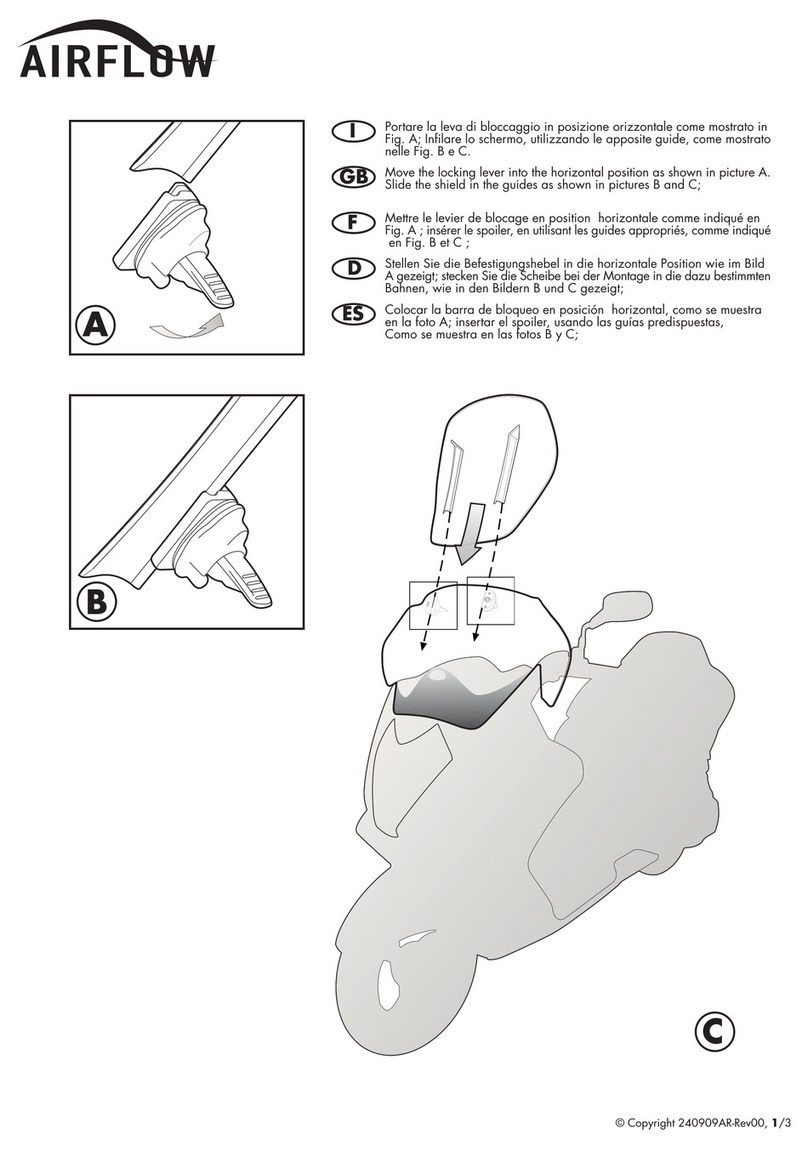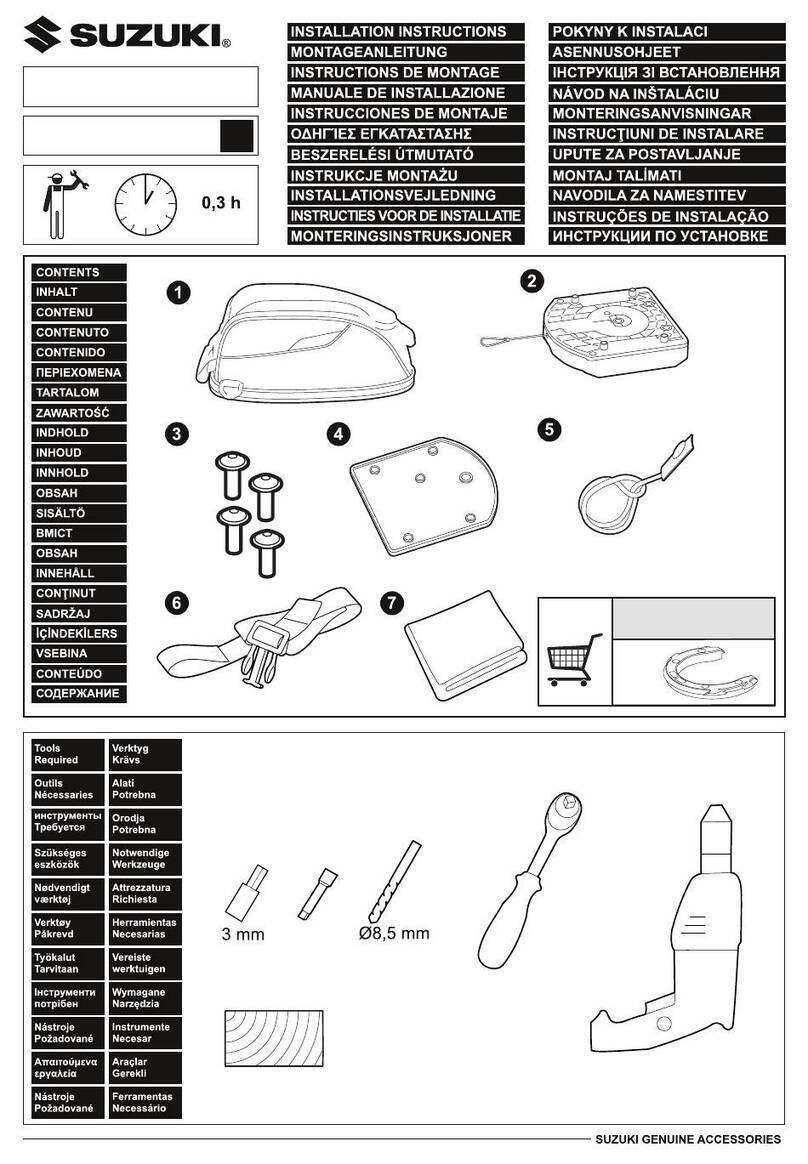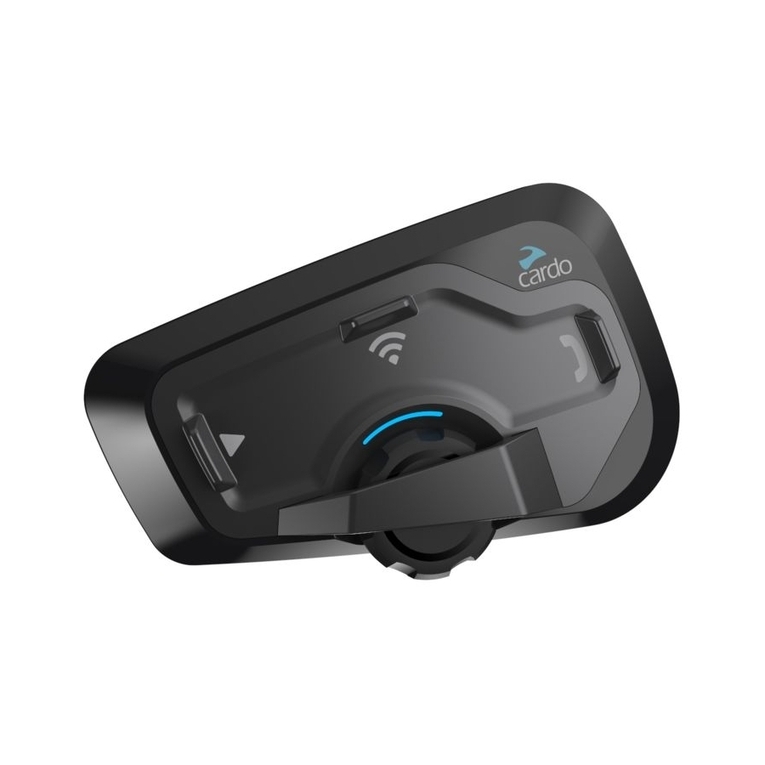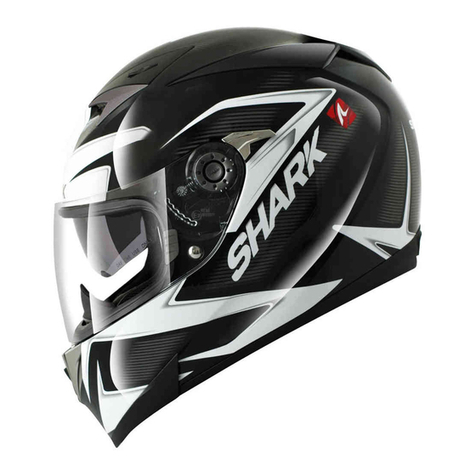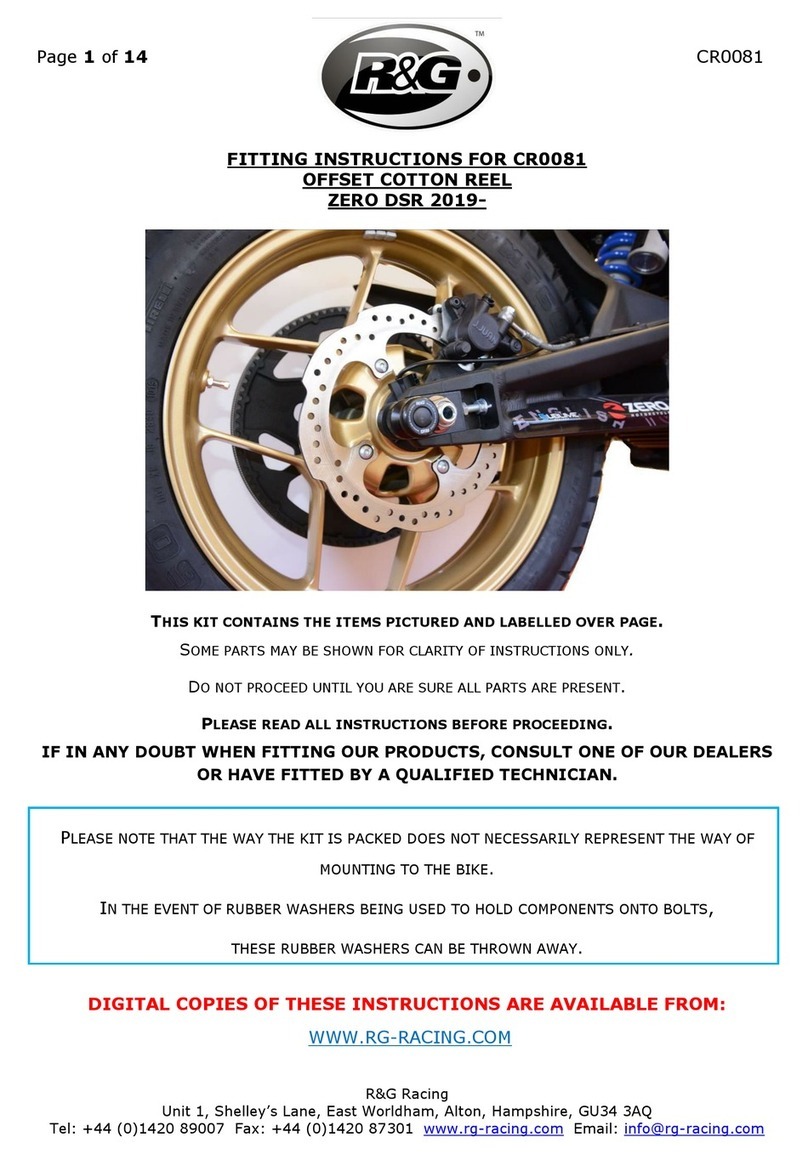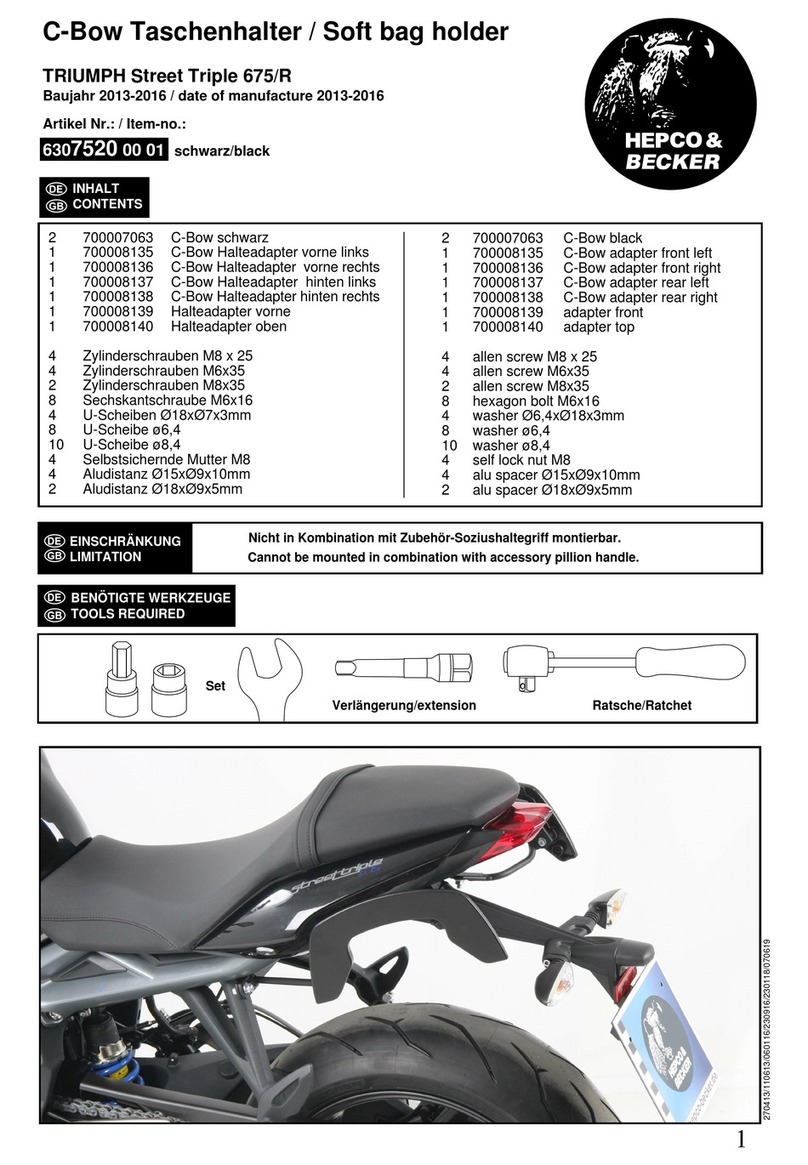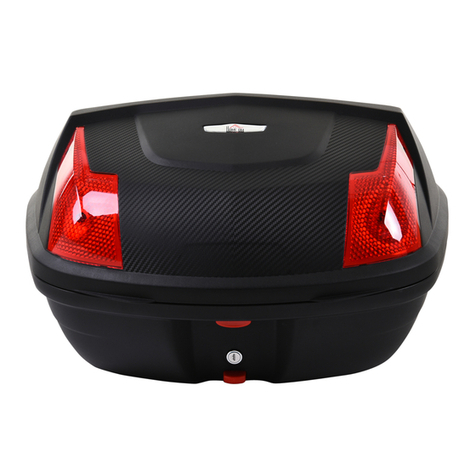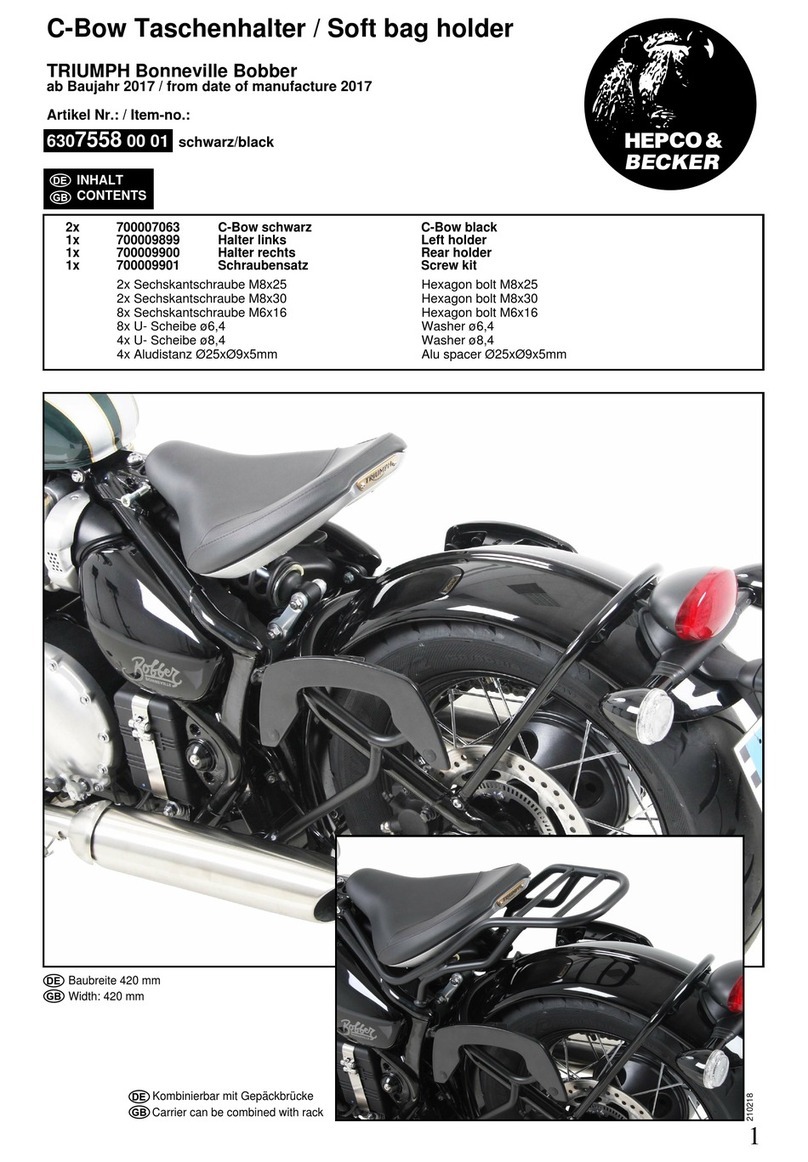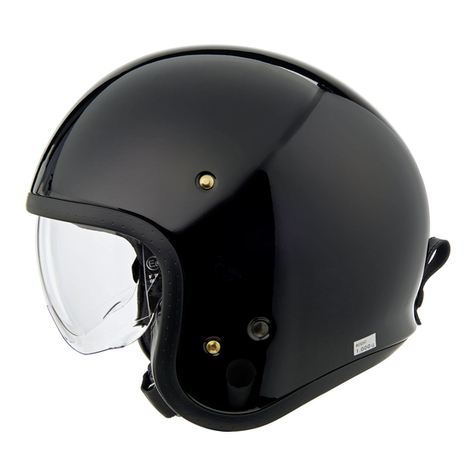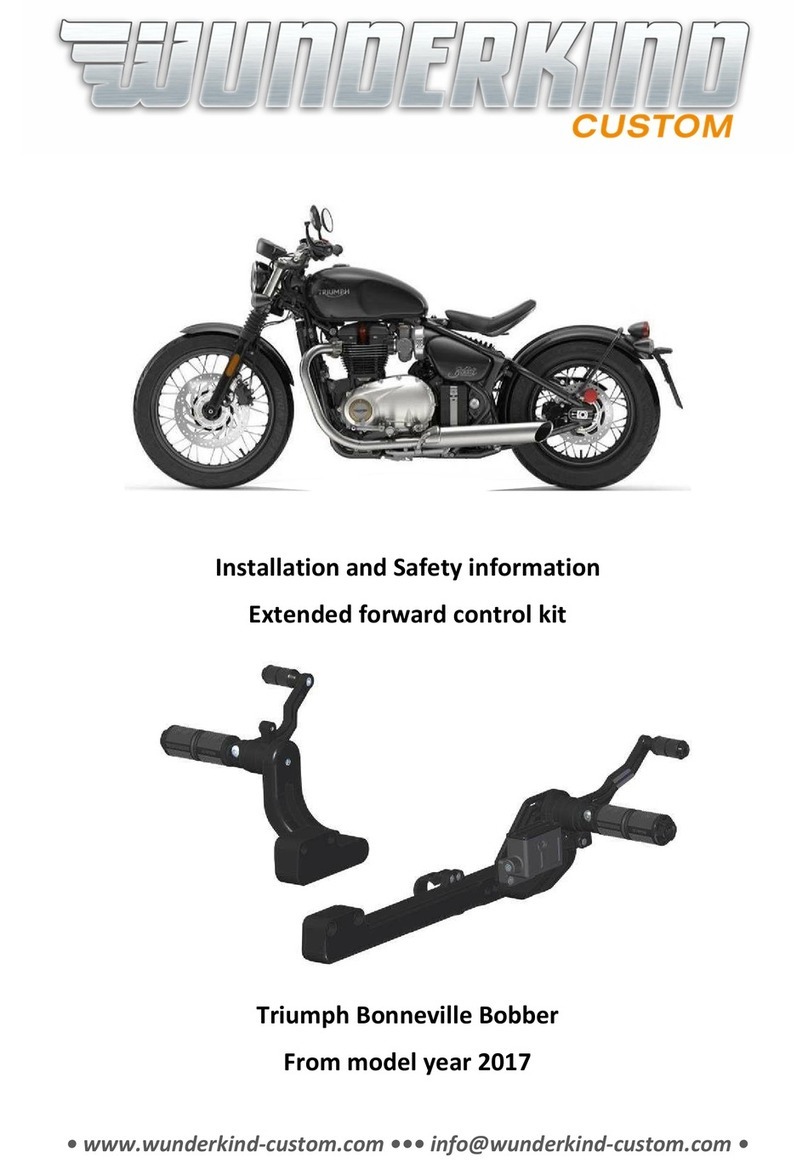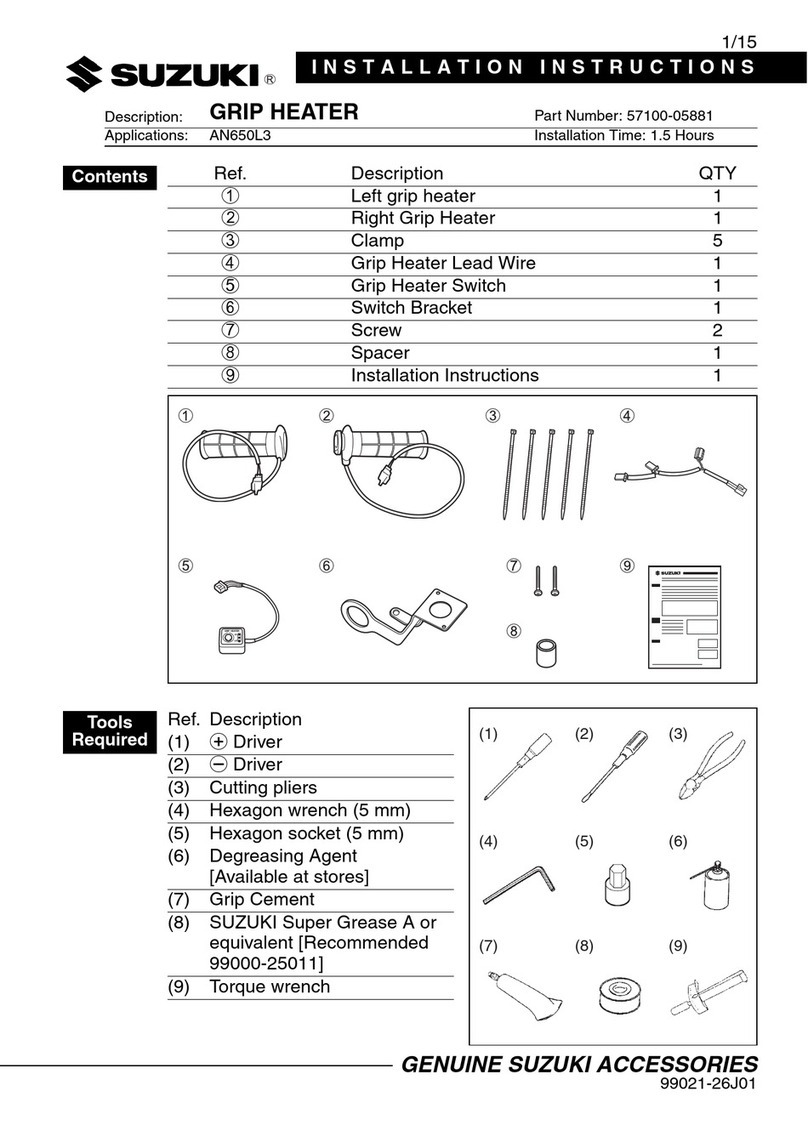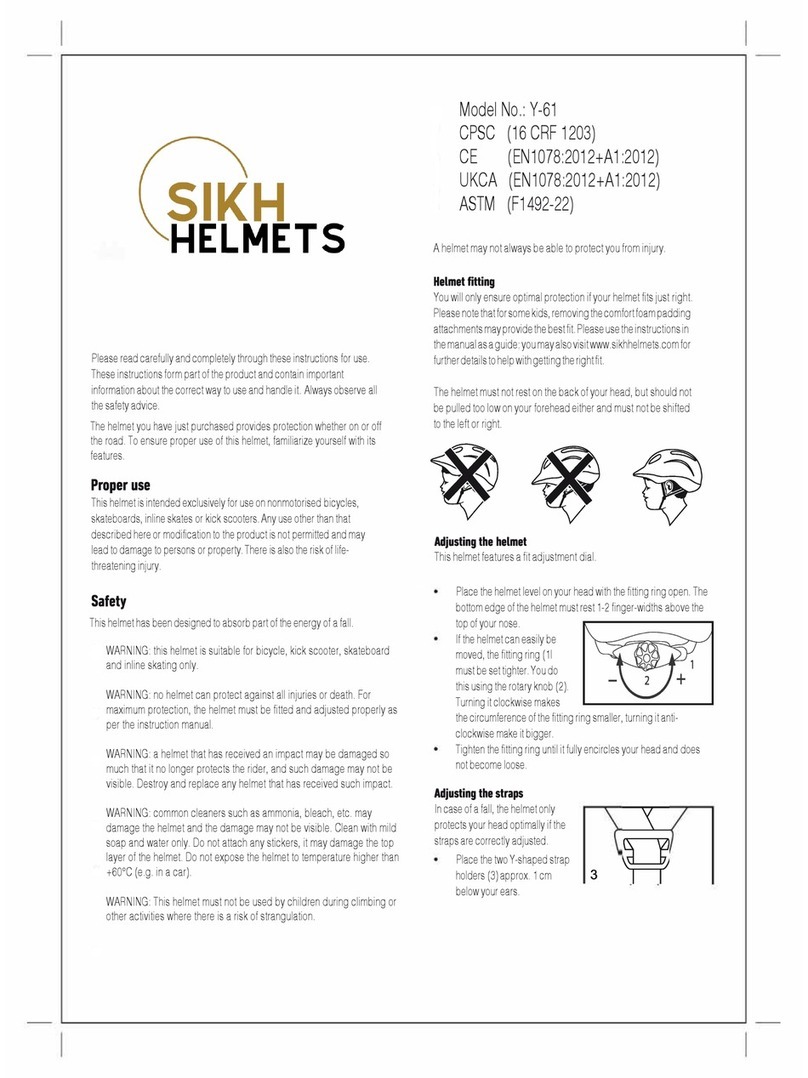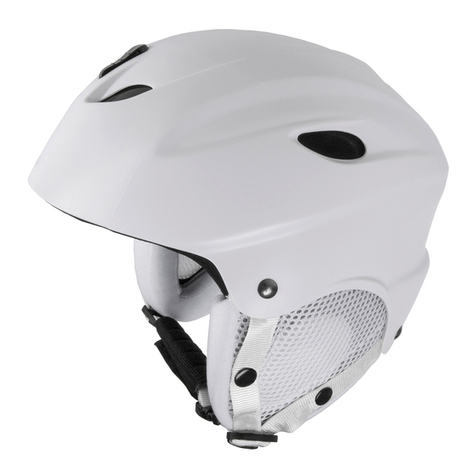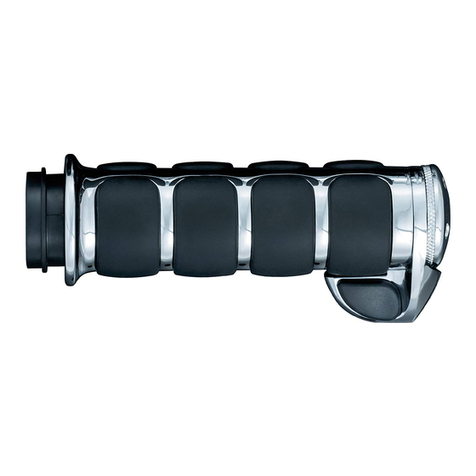
ENG 5
ENG
The storage of the helmet
Shield care and cleaning
Notes for use of full-face helmet
After using the helmet, stow it away in the helmet bag and store on a level place such as a shelf;
the helmet may be damaged if it rolls around or falls down.
Do not leave the helmet in direct heat above 50ºC e.g. next to a heater or under direct sunlight in a
car.
Cautions for shield
If the visor is marked “Day Time Use Only”, visibility is limited to daylight conditions and it is not
suitable for use at night.
Tinted lenses are not suitable for use at night.
A visor and goggles with scratches lowers the visibility and this is very dangerous. Such visors
should never be used at night and should be replaced.
Contact with petroleum products and other solvents may impair the optical properties and weaken
the strength of the visor.
Never try to open or close nor remove the visor while riding.
After using your helmet, with a wet soft cloth, lightly wipe off any grime (e.g. dead insects, dirt,
sand, dust, etc.) on the shield and then fully wipe it clean using a dry soft cloth. When the shield
gets wet (e.g. rainwater), it should always be wiped with a soft cloth after use.
When cleaning the shield, never use any petroleum-based solvents or detergents containing
abrasives.
Contact with petroleum products and other solvents may impair the optical properties and reduce
the mechanical strength.
To clean the shield, apply some common ph-neutral detergent diluted with clear water using a soft
cloth and wipe gently. Finally, wipe it dry with a lint-free soft cloth. To clean the shield, do not use
saline water or hot water (above 50ºC).
When you wear a full-face helmet, the temperature in the helmet is maintained nearly constant
while riding but the surroundings are constantly changing since you are moving at a high speed.
For this reason, in case of sudden rain, entering a tunnel or in a place with a large height
difference, the shield can be fogged suddenly because of the difference in temperature in-and
outside the helmet.
In case such a risk is expected, please use caution with adjusting the shield or slowing down your
speed in advance.
Never open or close the shield nor adjust the ventilation shutter while riding since it is very
dangerous. Adjust the shield before riding.
Any paint, glue, adhesive stickers, etc. (or the use of detergents and solvents other than those
prescribed) may not only reduce the original protective performance of the helmet considerably,
but may also cause damage to the helmet that cannot be detected by the naked eye.
Do not paint or apply solvent
Handle your helmet with care
Do not toss your helmet over a floor or sit on it. The helmet absorbs an impact every time it is
handled roughly and its impact-absorbing capacity will be decreased. Handle your helmet with
care to assure its full intended function in the event of an accident.
Do not use your helmet for any purpose other than to use for protecting your head while riding.
5
The storage of the helmet
Shield care and cleaning
Notes for use of full-face helmet
After using the helmet, stow it away in the helmet bag and store on a level place such as a shelf;
the helmet may be damaged if it rolls around or falls down.
Do not leave the helmet in direct heat above 50ºC e.g. next to a heater or under direct sunlight in a
car.
Cautions for shield
If the visor is marked “Day Time Use Only”, visibility is limited to daylight conditions and it is not
suitable for use at night.
Tinted lenses are not suitable for use at night.
A visor and goggles with scratches lowers the visibility and this is very dangerous. Such visors
should never be used at night and should be replaced.
Contact with petroleum products and other solvents may impair the optical properties and weaken
the strength of the visor.
Never try to open or close nor remove the visor while riding.
After using your helmet, with a wet soft cloth, lightly wipe off any grime (e.g. dead insects, dirt,
sand, dust, etc.) on the shield and then fully wipe it clean using a dry soft cloth. When the shield
gets wet (e.g. rainwater), it should always be wiped with a soft cloth after use.
When cleaning the shield, never use any petroleum-based solvents or detergents containing
abrasives.
Contact with petroleum products and other solvents may impair the optical properties and reduce
the mechanical strength.
To clean the shield, apply some common ph-neutral detergent diluted with clear water using a soft
cloth and wipe gently. Finally, wipe it dry with a lint-free soft cloth. To clean the shield, do not use
saline water or hot water (above 50ºC).
When you wear a full-face helmet, the temperature in the helmet is maintained nearly constant
while riding but the surroundings are constantly changing since you are moving at a high speed.
For this reason, in case of sudden rain, entering a tunnel or in a place with a large height
difference, the shield can be fogged suddenly because of the difference in temperature in-and
outside the helmet.
In case such a risk is expected, please use caution with adjusting the shield or slowing down your
speed in advance.
Never open or close the shield nor adjust the ventilation shutter while riding since it is very
dangerous. Adjust the shield before riding.
Any paint, glue, adhesive stickers, etc. (or the use of detergents and solvents other than those
prescribed) may not only reduce the original protective performance of the helmet considerably,
but may also cause damage to the helmet that cannot be detected by the naked eye.
Do not paint or apply solvent
Handle your helmet with care
Do not toss your helmet over a floor or sit on it. The helmet absorbs an impact every time it is
handled roughly and its impact-absorbing capacity will be decreased. Handle your helmet with
care to assure its full intended function in the event of an accident.
Do not use your helmet for any purpose other than to use for protecting your head while riding.
